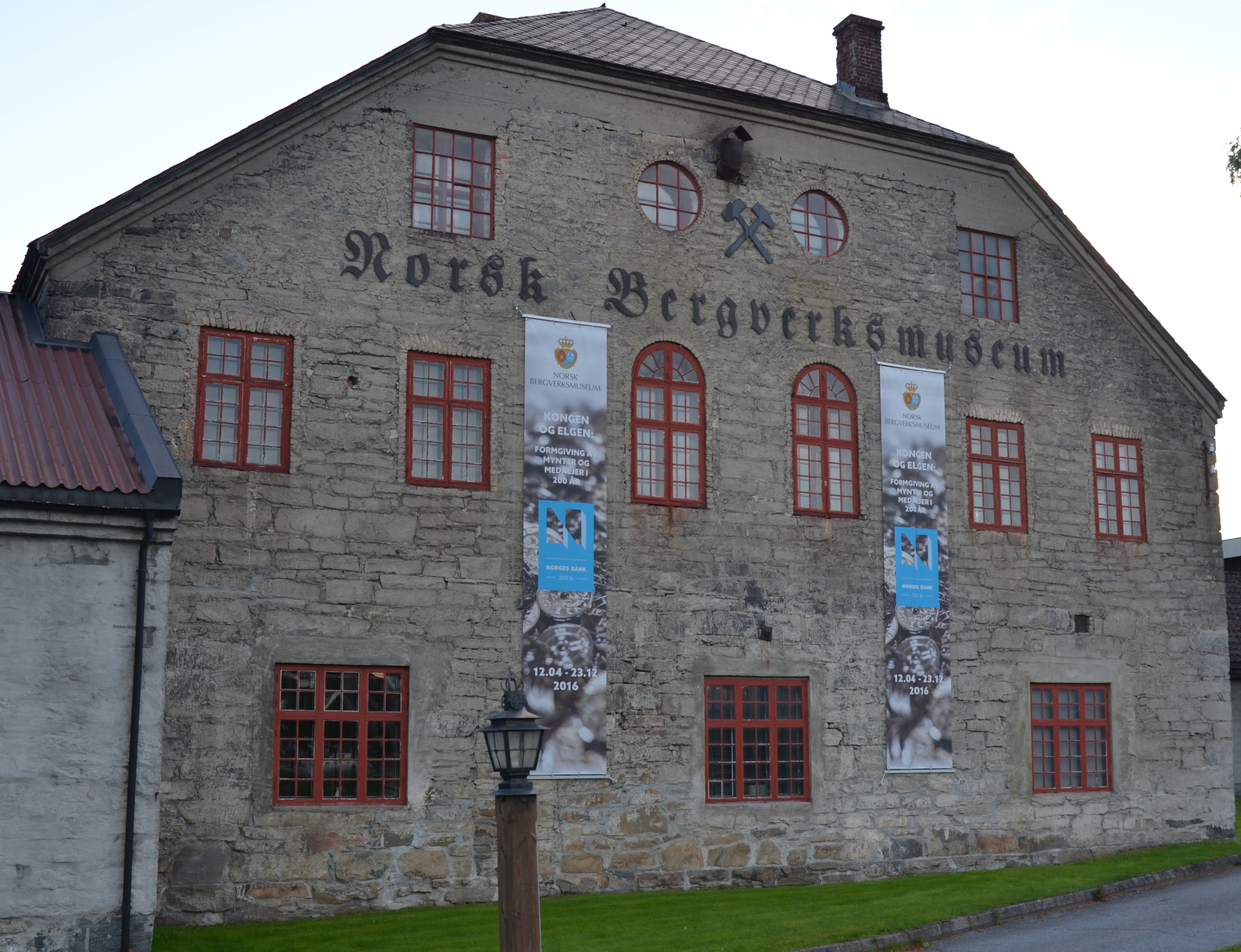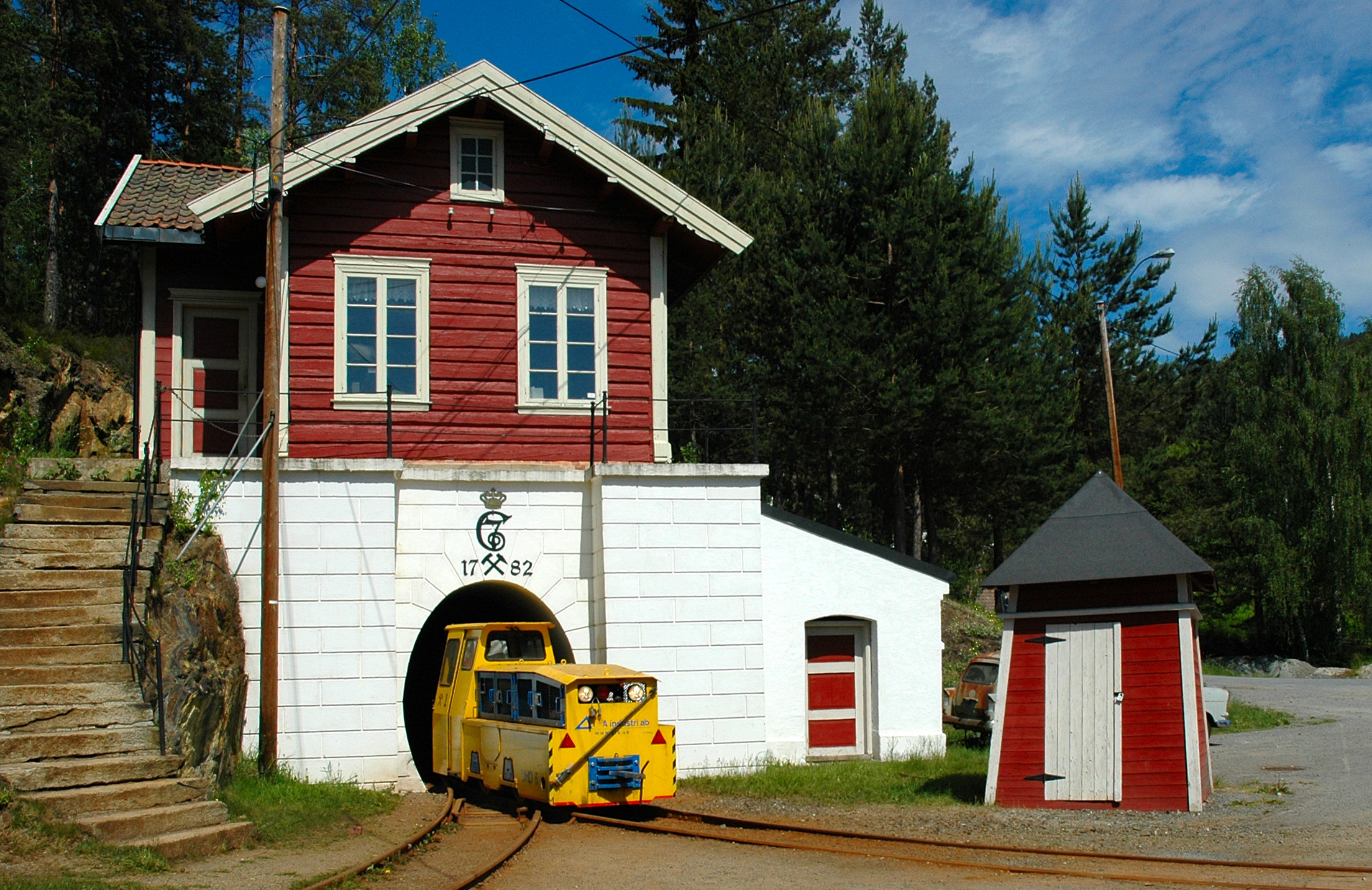|
Norwegian Mining Museum
The Norwegian Mining Museum ( no, Norsk Bergverksmuseum) is located at Kongsberg in Viken county, Norway. Norwegian Mining Museum documents the history of the former Kongsberg Silver Mines (''Kongsberg Sølvverk''). The museum was established in 1938, and opened to the public in 1945. The museum documents the development of mining throughout the period the silver mines in Kongsberg were in operation. As early as the 15th century, there was mining in the area. Copper ore was then taken out. Around 1540, silver-containing lead ore was also found. Silver deposits at Kongsberg were first discovered in 1629 with mines were in operation until 1958. The cultural heritage dates from the 18th century, but there are traces of mining through the entire period of operation. The mining captain's house, cottages, stables, foundation for a water wheel as well as the system of aqueducts and dams are preserved. Situated close to the entrance of the silver mines are shelters once used by the ... [...More Info...] [...Related Items...] OR: [Wikipedia] [Google] [Baidu] |
Norsk Bergverksmuseum
The Norwegian Mining Museum ( no, Norsk Bergverksmuseum) is located at Kongsberg in Viken county, Norway. Norwegian Mining Museum documents the history of the former Kongsberg Silver Mines Kongsberg Silver works () was a mining operation at Kongsberg in Viken county in Norway. The town of Kongsberg is the site of the Norwegian Mining Museum (). History Operating from over 80 different sites, Kongsberg silver mines constituted th ... (''Kongsberg Sølvverk''). The museum was established in 1938, and opened to the public in 1945. The museum documents the development of mining throughout the period the silver mines in Kongsberg were in operation. As early as the 15th century, there was mining in the area. Copper ore was then taken out. Around 1540, silver-containing lead ore was also found. Silver deposits at Kongsberg were first discovered in 1629 with mines were in operation until 1958. The cultural heritage dates from the 18th century, but there are traces of mining t ... [...More Info...] [...Related Items...] OR: [Wikipedia] [Google] [Baidu] |
Kongsberg
Kongsberg () is a historical mining town and municipality in Buskerud, Viken county, Norway. The city is located on the river Numedalslågen at the entrance to the valley of Numedal. Kongsberg has been a centre of silver mining, arms production and forestry for centuries, and is the site of high technology industry including the headquarters of Norway's largest defence contractor Kongsberg Gruppen. Kongsberg, formerly spelled Konningsberg ( "King's Mountain"), was developed as a mining city on the basis of the Kongsberg Silver Mines, founded by and named after King Christian IV of Denmark and Norway in 1624. The king invited German engineers and other specialists from Saxony and the Harz region to help build the mining company. As a mining city, Kongsberg had a distinct urban culture that contrasted with its surroundings, strongly influenced by the traditions of mining communities in Germany and where the German language was extensively used in mining business and for religious s ... [...More Info...] [...Related Items...] OR: [Wikipedia] [Google] [Baidu] |
Viken (county)
Viken is a county under disestablishment in Eastern Norway that was established on 1 January 2020 by the merger of Akershus, Buskerud and Østfold with the addition of three other municipalities. Viken was controversial from the onset, with an approval rating of about 20% in the region, and the merger was resisted by all the three counties. Viken has been compared to gerrymandering. The county executive of Viken determined in 2019, before the merger had taken effect, that the county's disestablishment is its main political goal, and the formal process to dissolve Viken was initiated by the county executive in right after the 2021 Norwegian parliamentary election in which parties seeking to reverse the merger won a majority. The political platform of the government of Jonas Gahr Støre states that the government will dissolve Viken and re-establish Akershus, Buskerud and Østfold based on a request from the county itself. On 22 February 2022, the regional assembly of Viken appro ... [...More Info...] [...Related Items...] OR: [Wikipedia] [Google] [Baidu] |
Kongsberg Silver Mines
Kongsberg Silver works () was a mining operation at Kongsberg in Viken county in Norway. The town of Kongsberg is the site of the Norwegian Mining Museum (). History Operating from over 80 different sites, Kongsberg silver mines constituted the largest mining field in Norway. It was the largest pre-industrial working place in Norway, with over 4,000 workers at its peak in the 1770s and supplied over 10% of the gross national product of the Danish–Norwegian union during its 335-year-long history: over 450,000 man-years were expended in the production. The silver mines in Kongsberg were in operation from 1623 until 1958. Total production exceeded 1,3 million kg silver. Silver was first discovered between the 1 July and 5 July 1623, according to the somewhat romanticized story, which tells of two small children - Helga and Jacob - who were out shepherding their cattle at the top of Gruveåsen hill. They had an ox with them which scraped on the side of the mountain. They could ... [...More Info...] [...Related Items...] OR: [Wikipedia] [Google] [Baidu] |
Museums In Viken
A museum ( ; plural museums or, rarely, musea) is a building or institution that cares for and displays a collection of artifacts and other objects of artistic, cultural, historical, or scientific importance. Many public museums make these items available for public viewing through exhibits that may be permanent or temporary. The largest museums are located in major cities throughout the world, while thousands of local museums exist in smaller cities, towns, and rural areas. Museums have varying aims, ranging from the conservation and documentation of their collection, serving researchers and specialists, to catering to the general public. The goal of serving researchers is not only scientific, but intended to serve the general public. There are many types of museums, including art museums, natural history museums, science museums, war museums, and children's museums. According to the International Council of Museums (ICOM), there are more than 55,000 museums in 202 countries ... [...More Info...] [...Related Items...] OR: [Wikipedia] [Google] [Baidu] |
Mining Museums
Mining is the extraction of valuable minerals or other geological materials from the Earth, usually from an ore body, lode, vein, seam, reef, or placer deposit. The exploitation of these deposits for raw material is based on the economic viability of investing in the equipment, labor, and energy required to extract, refine and transport the materials found at the mine to manufacturers who can use the material. Ores recovered by mining include metals, coal, oil shale, gemstones, limestone, chalk, dimension stone, rock salt, potash, gravel, and clay. Mining is required to obtain most materials that cannot be grown through agricultural processes, or feasibly created artificially in a laboratory or factory. Mining in a wider sense includes extraction of any non-renewable resource such as petroleum, natural gas, or even water. Modern mining processes involve prospecting for ore bodies, analysis of the profit potential of a proposed mine, extraction of the desired materials, and fi ... [...More Info...] [...Related Items...] OR: [Wikipedia] [Google] [Baidu] |




